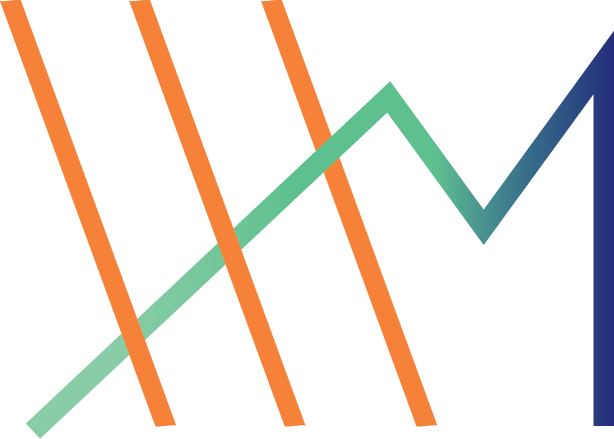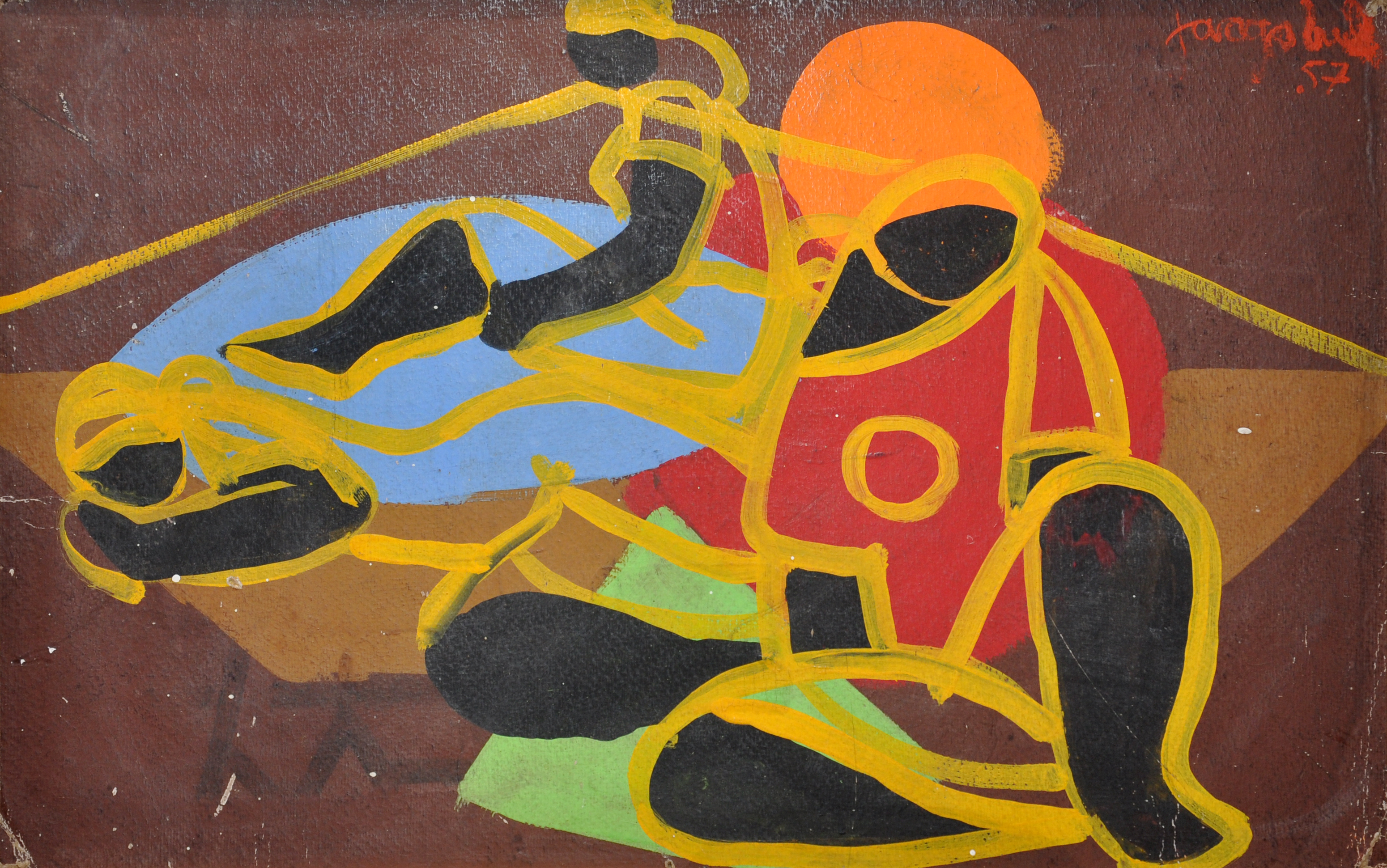
Jacques Gabriel, Acrylic on Masonite, 1957
Jacques Gabriel (1934-1988) was born in Port-au-Prince Haiti and went to school in the Unites States. Returning to Haiti, he studied in Haiti under Roland Dorcely for year before moving to Paris. In Paris, he discovers surrealism, and begins to work in both a figurative and abstract manner. His work is known for interesting use of perspective and strong contrasts. A retrospective of his work was held at Le Musée d’art Haitien in 2002.

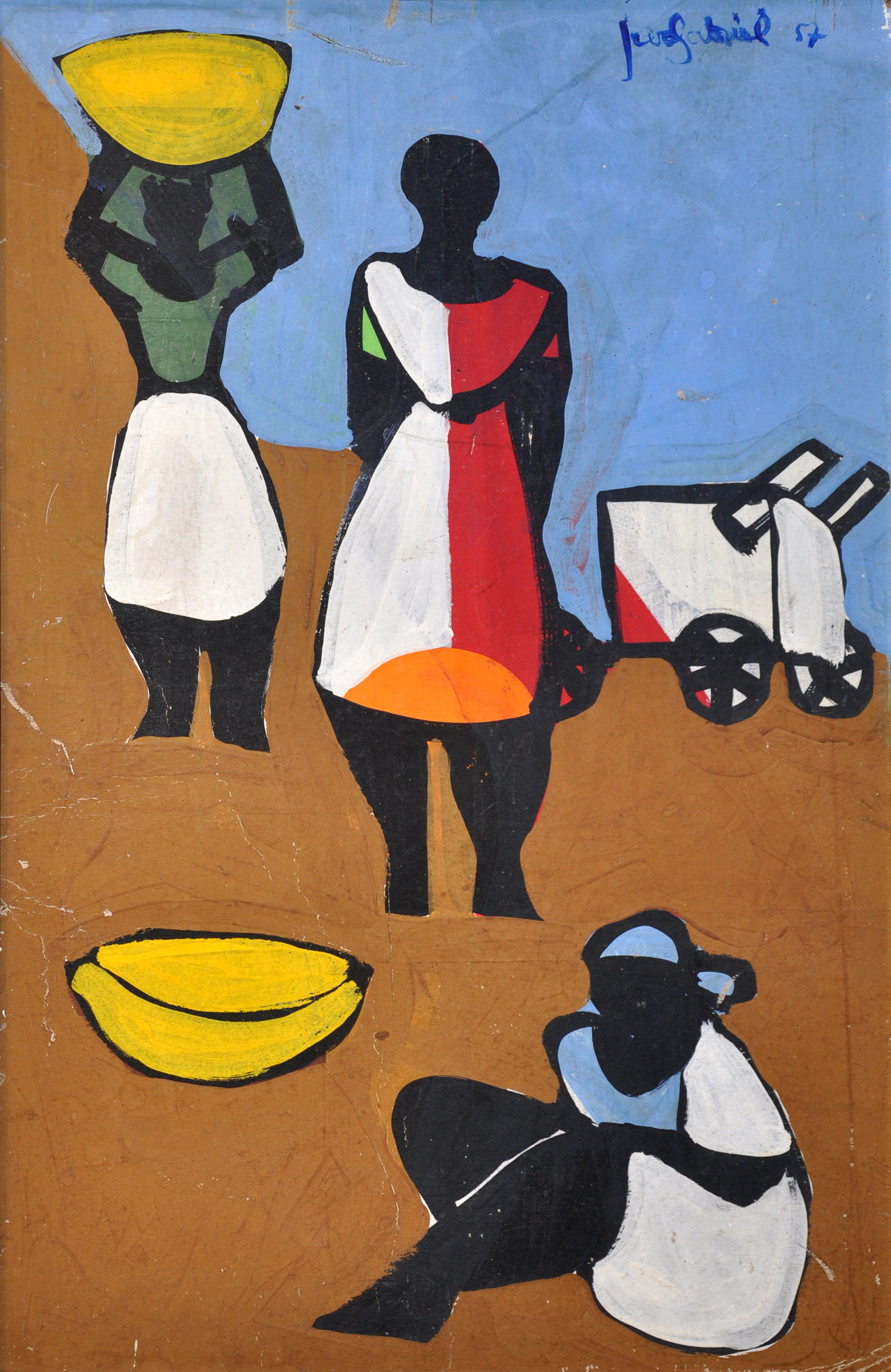
Jacques Gabriel, Acrylic on Masonite, 1957
Jacques Gabriel (1934-1988) was born in Port-au-Prince Haiti and went to school in the Unites States. Returning to Haiti, he studied in Haiti under Roland Dorcely for year before moving to Paris. In Paris, he discovers surrealism, and begins to work in both a figurative and abstract manner. His work is known for interesting use of perspective and strong contrasts. A retrospective of his work was held at Le Musée d’art Haitien in 2002.

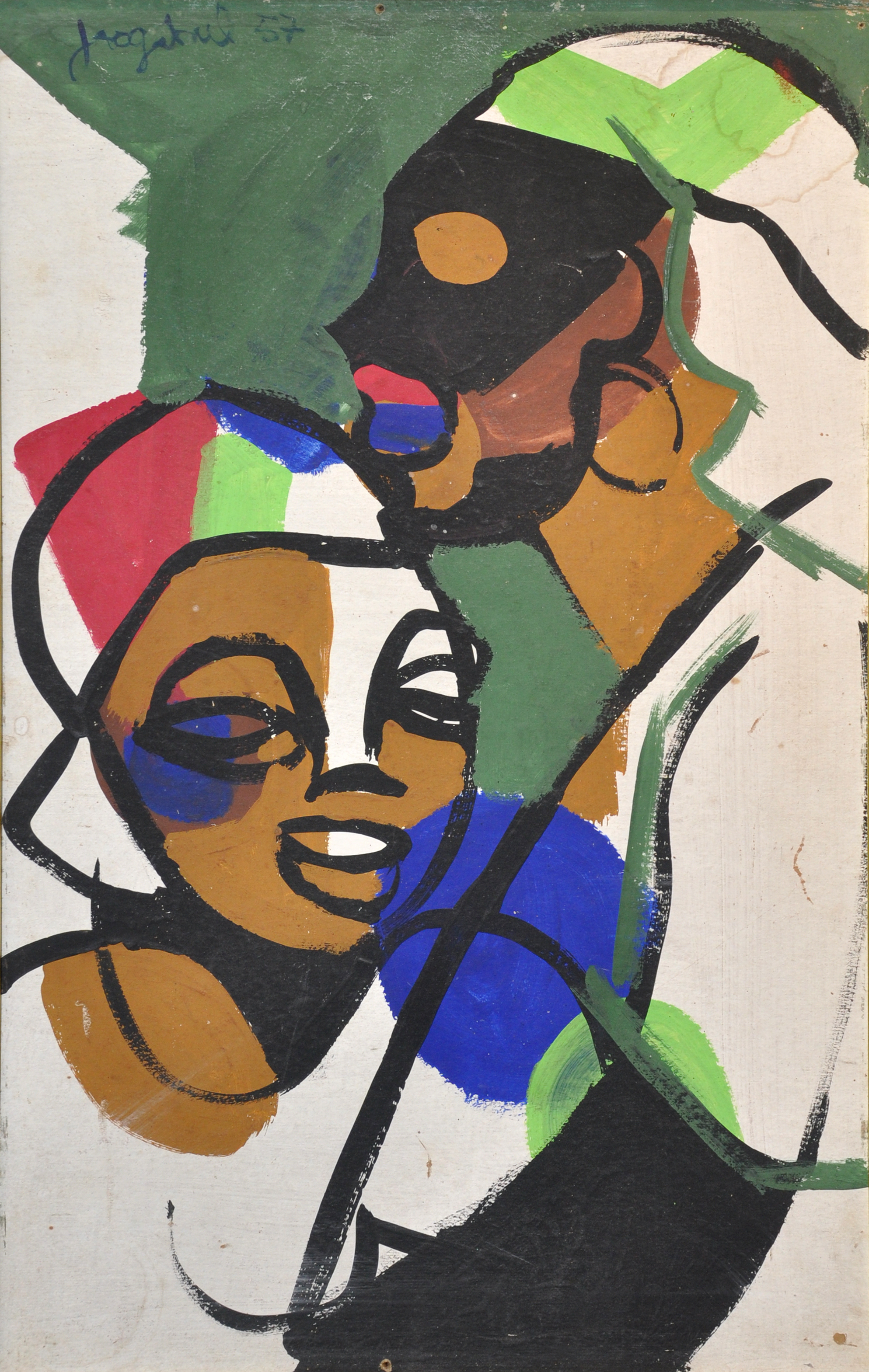
Jacques Gabriel, Acrylic on Masonite, 1957
Jacques Gabriel (1934-1988) was born in Port-au-Prince Haiti and went to school in the Unites States. Returning to Haiti, he studied in Haiti under Roland Dorcely for year before moving to Paris. In Paris, he discovers surrealism, and begins to work in both a figurative and abstract manner. His work is known for interesting use of perspective and strong contrasts. A retrospective of his work was held at Le Musée d’art Haitien in 2002.

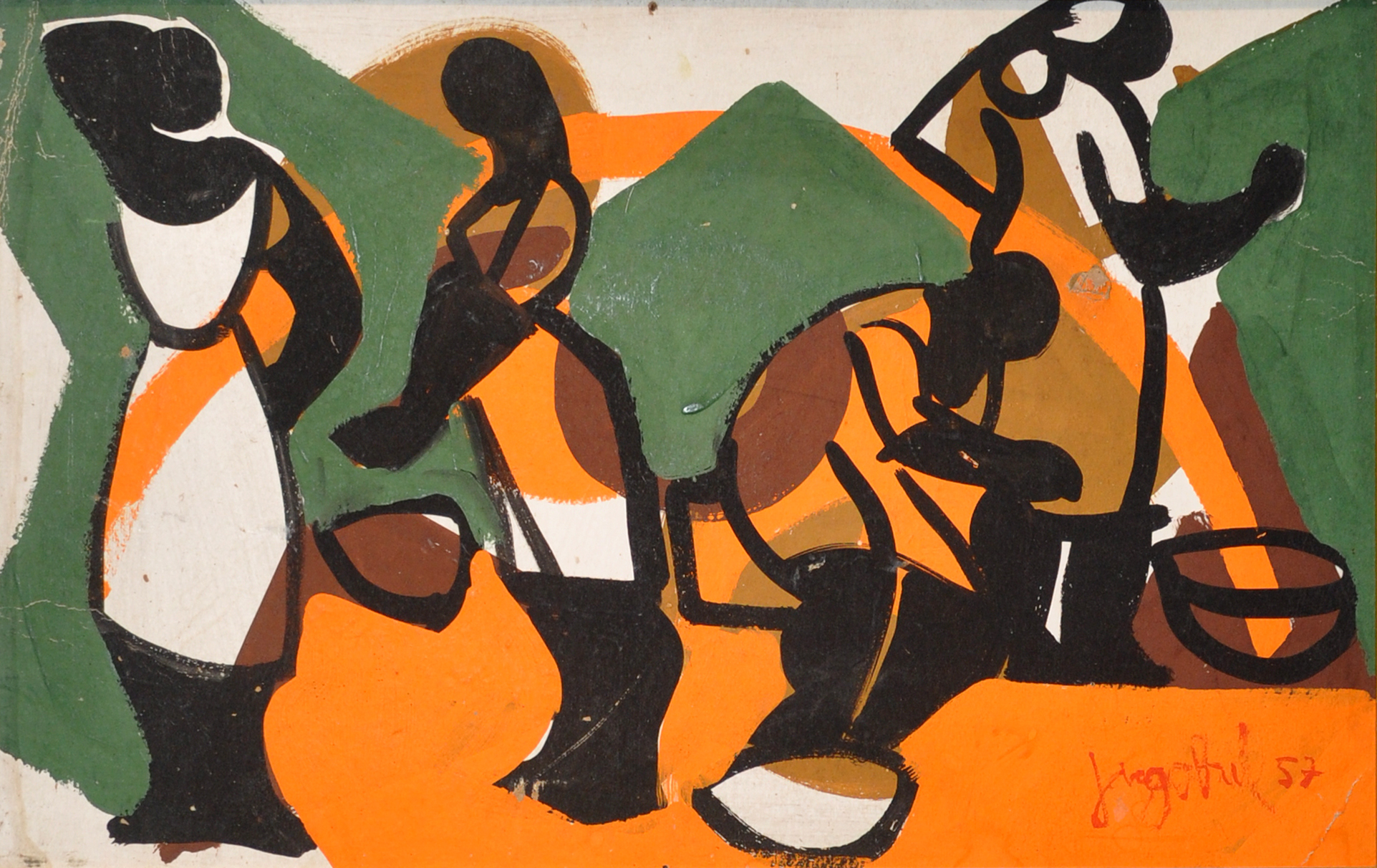
Jacques Gabriel, Acrylic on Masonite, 1957
Jacques Gabriel (1934-1988) was born in Port-au-Prince Haiti and went to school in the Unites States. Returning to Haiti, he studied in Haiti under Roland Dorcely for year before moving to Paris. In Paris, he discovers surrealism, and begins to work in both a figurative and abstract manner. His work is known for interesting use of perspective and strong contrasts. A retrospective of his work was held at Le Musée d’art Haitien in 2002.

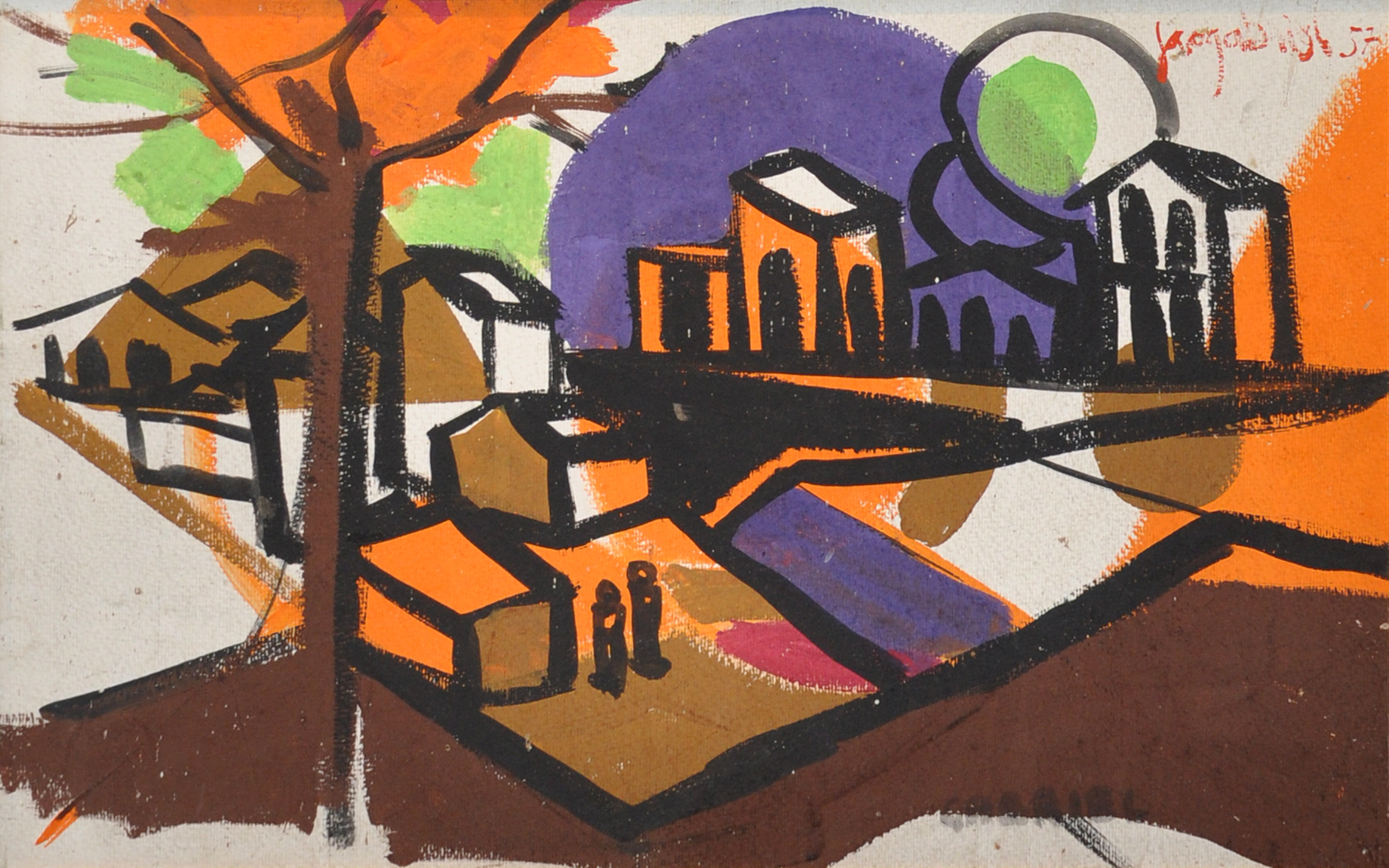
Jacques Gabriel, Acrylic on Masonite, 1957
Jacques Gabriel (1934-1988) was born in Port-au-Prince Haiti and went to school in the Unites States. Returning to Haiti, he studied in Haiti under Roland Dorcely for year before moving to Paris. In Paris, he discovers surrealism, and begins to work in both a figurative and abstract manner. His work is known for interesting use of perspective and strong contrasts. A retrospective of his work was held at Le Musée d’art Haitien in 2002.

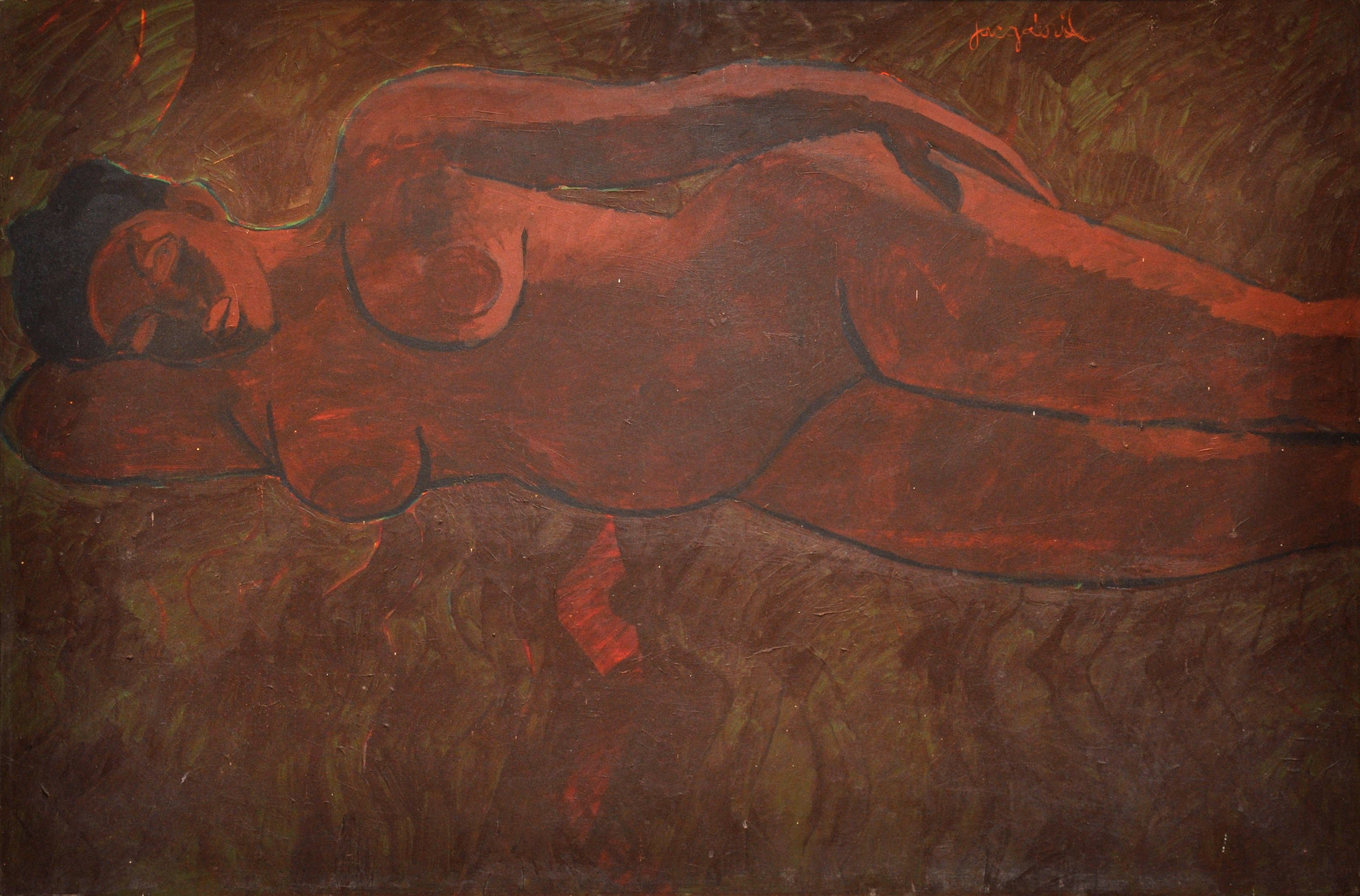
Jacques Gabriel, Oil on Canvas, approx. 1957-1965
Jacques Gabriel (1934-1988) was born in Port-au-Prince Haiti and went to school in the Unites States. Returning to Haiti, he studied in Haiti under Roland Dorcely for year before moving to Paris. In Paris, he discovers surrealism, and begins to work in both a figurative and abstract manner. His work is known for interesting use of perspective and strong contrasts. A retrospective of his work was held at Le Musée d’art Haitien in 2002.

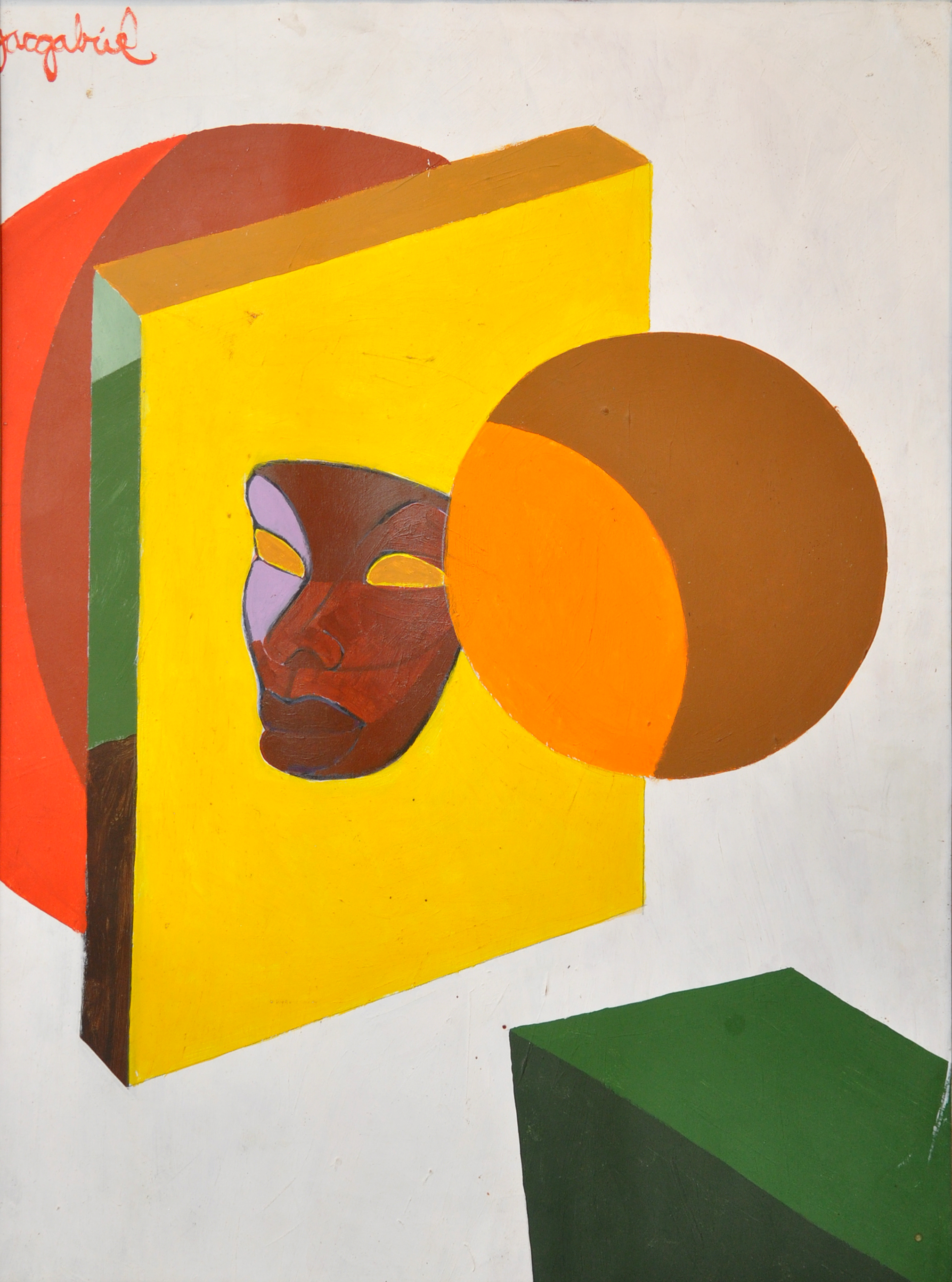
Jacques Gabriel, Oil on Canvas, approx. 1957-1965
Jacques Gabriel (1934-1988) was born in Port-au-Prince Haiti and went to school in the Unites States. Returning to Haiti, he studied in Haiti under Roland Dorcely for year before moving to Paris. In Paris, he discovers surrealism, and begins to work in both a figurative and abstract manner. His work is known for interesting use of perspective and strong contrasts. A retrospective of his work was held at Le Musée d’art Haitien in 2002.

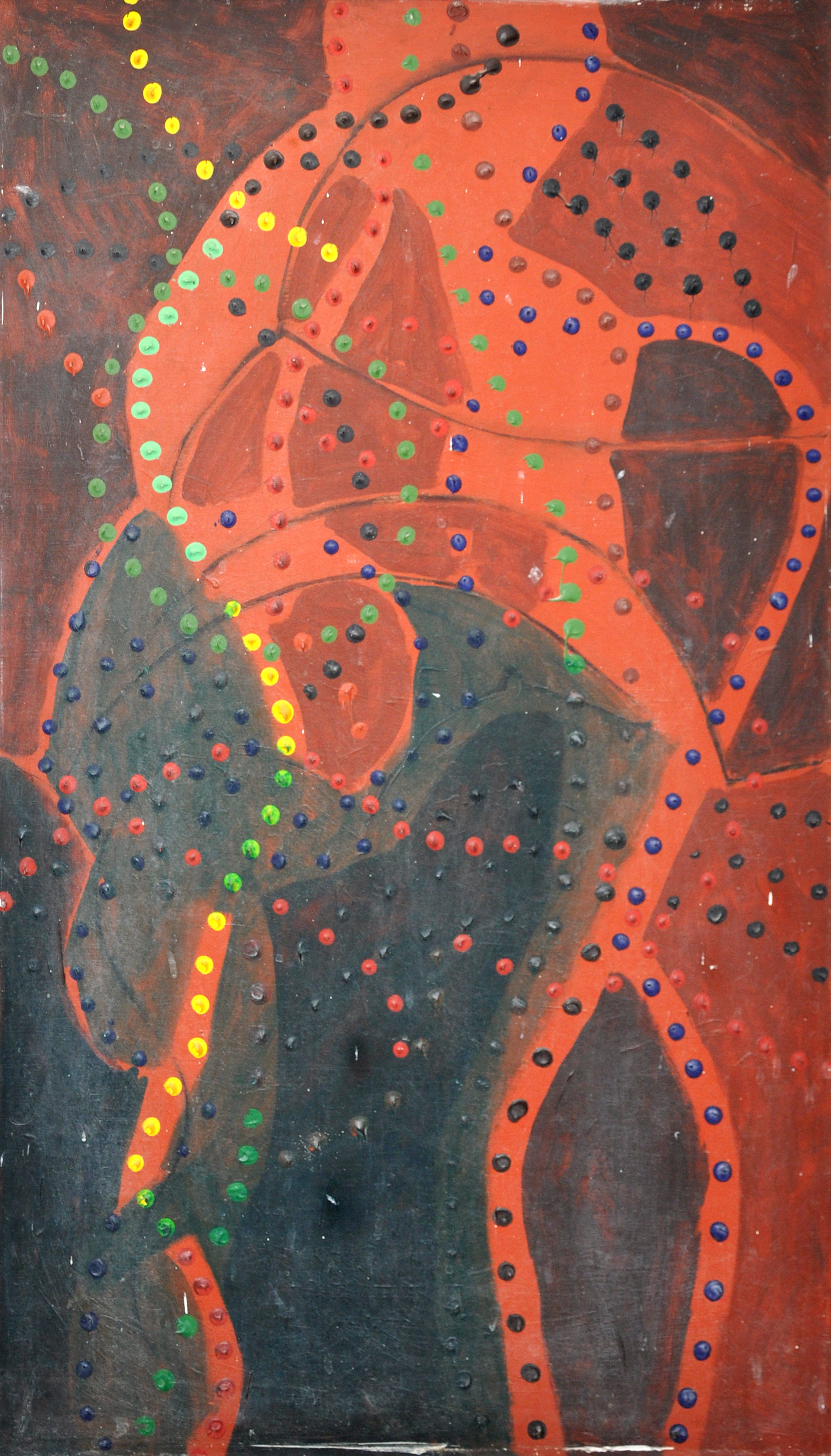
Jacques Gabriel, Oil on Canvas, approx. 1957-1965
Jacques Gabriel (1934-1988) was born in Port-au-Prince Haiti and went to school in the Unites States. Returning to Haiti, he studied in Haiti under Roland Dorcely for year before moving to Paris. In Paris, he discovers surrealism, and begins to work in both a figurative and abstract manner. His work is known for interesting use of perspective and strong contrasts. A retrospective of his work was held at Le Musée d’art Haitien in 2002.

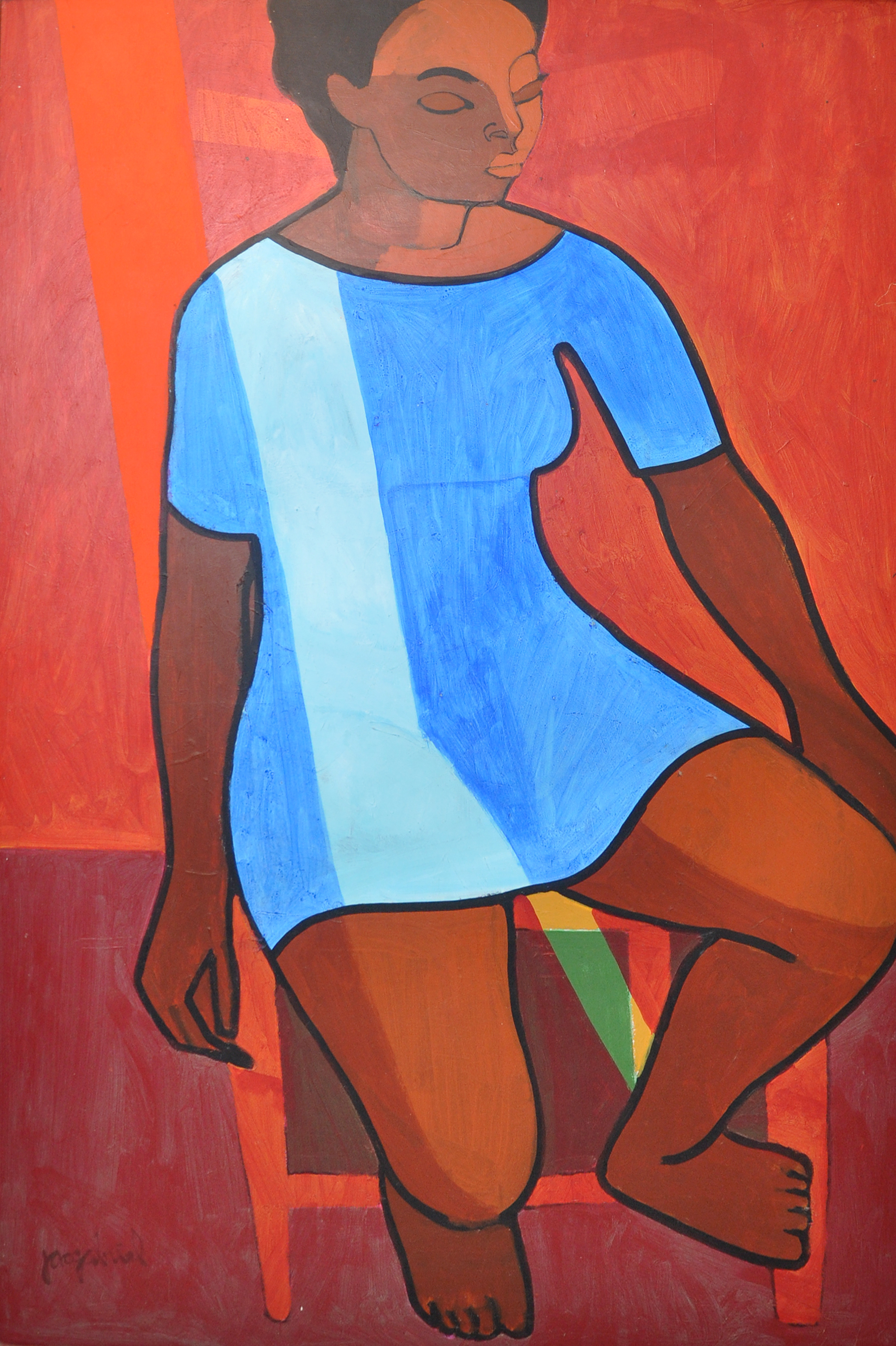
Jacques Gabriel, Oil on Canvas, approx. 1957-1965
Jacques Gabriel (1934-1988) was born in Port-au-Prince Haiti and went to school in the Unites States. Returning to Haiti, he studied in Haiti under Roland Dorcely for year before moving to Paris. In Paris, he discovers surrealism, and begins to work in both a figurative and abstract manner. His work is known for interesting use of perspective and strong contrasts. A retrospective of his work was held at Le Musée d’art Haitien in 2002.

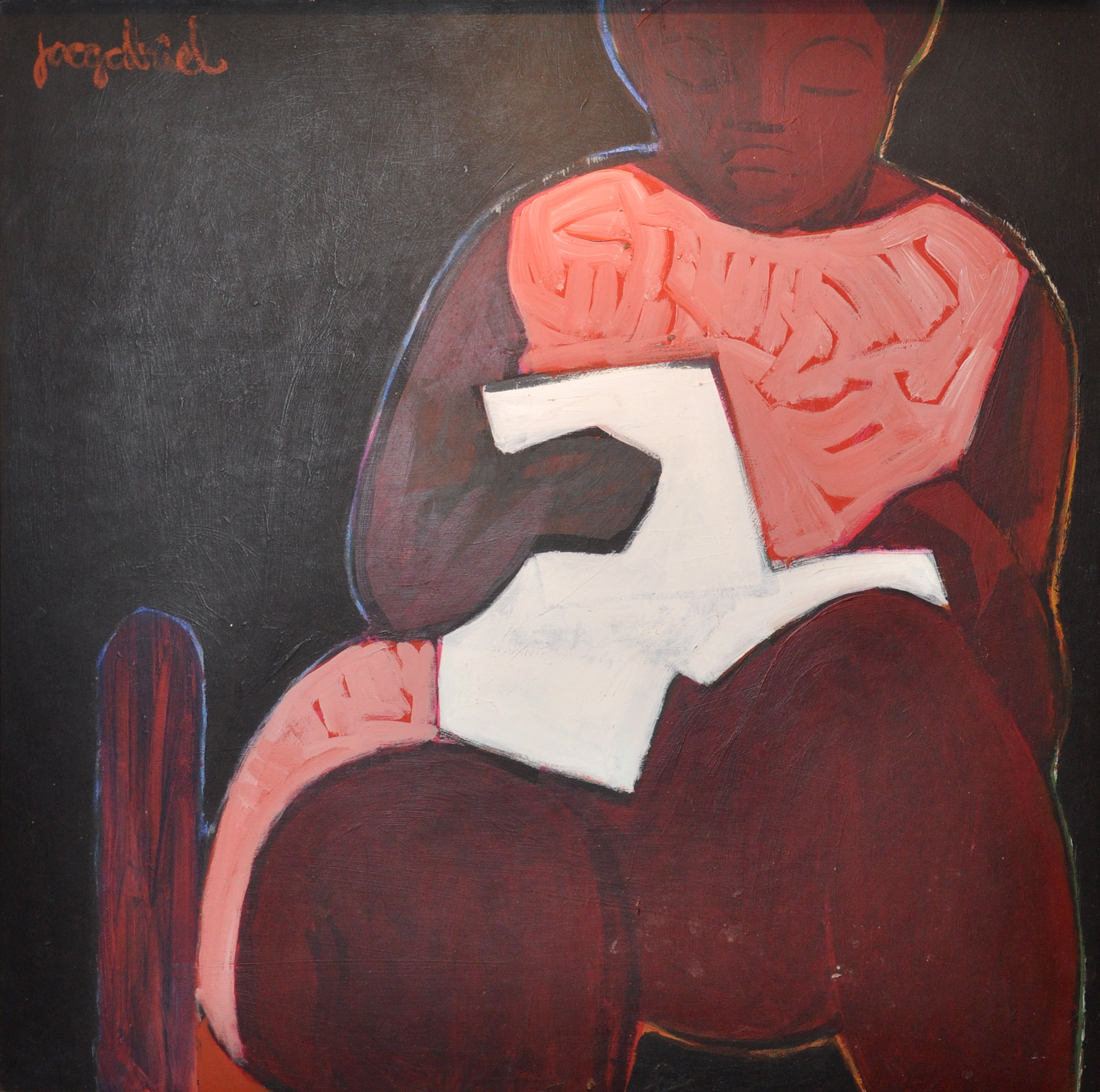
Jacques Gabriel, Oil on Canvas, approx. 1957-1965
Jacques Gabriel (1934-1988) was born in Port-au-Prince Haiti and went to school in the Unites States. Returning to Haiti, he studied in Haiti under Roland Dorcely for year before moving to Paris. In Paris, he discovers surrealism, and begins to work in both a figurative and abstract manner. His work is known for interesting use of perspective and strong contrasts. A retrospective of his work was held at Le Musée d’art Haitien in 2002.

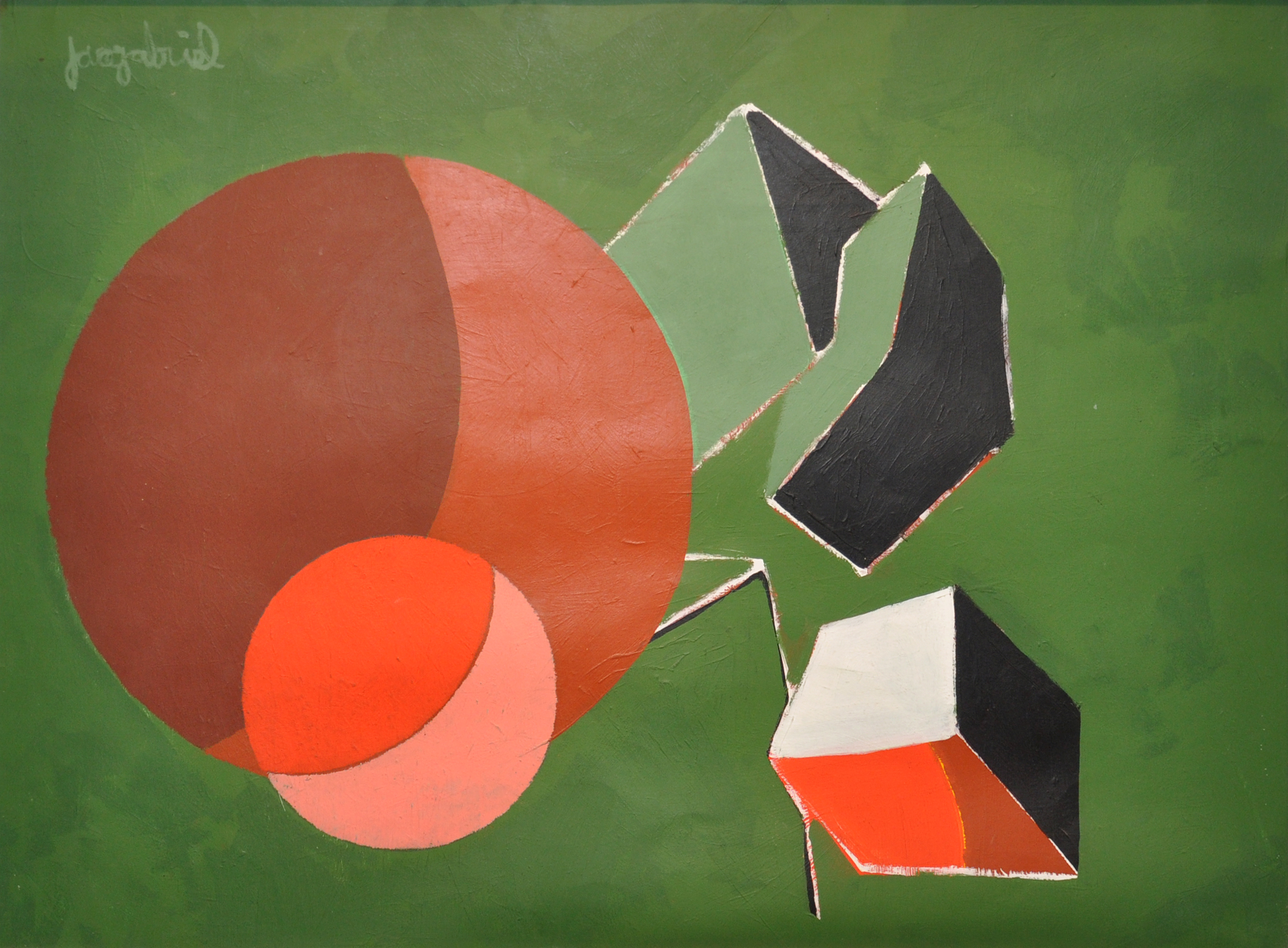
Jacques Gabriel, Oil on Canvas, approx. 1957-1965
Jacques Gabriel (1934-1988) was born in Port-au-Prince Haiti and went to school in the Unites States. Returning to Haiti, he studied in Haiti under Roland Dorcely for year before moving to Paris. In Paris, he discovers surrealism, and begins to work in both a figurative and abstract manner. His work is known for interesting use of perspective and strong contrasts. A retrospective of his work was held at Le Musée d’art Haitien in 2002.

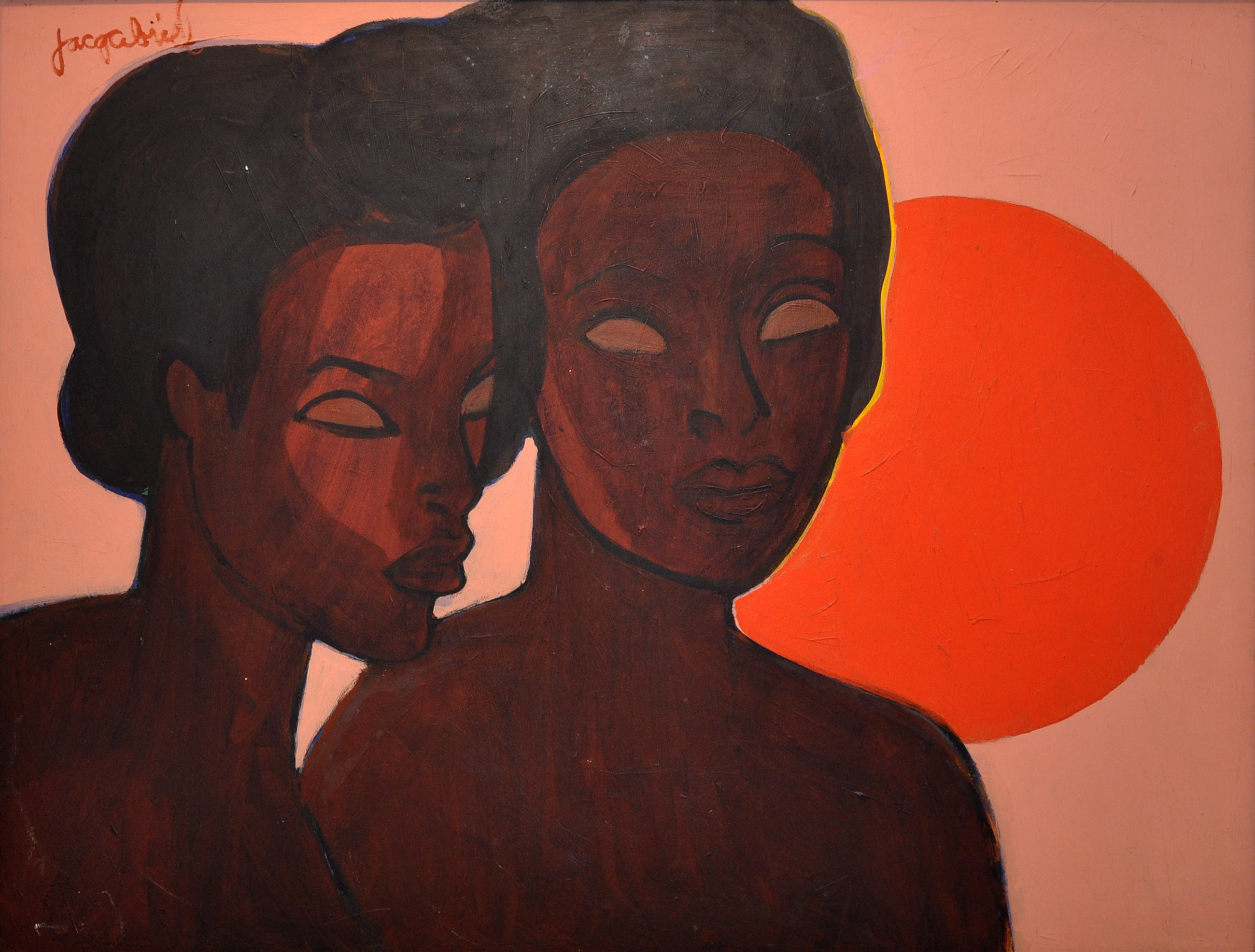
Jacques Gabriel, Oil on Canvas, approx. 1957-1965
Jacques Gabriel (1934-1988) was born in Port-au-Prince Haiti and went to school in the Unites States. Returning to Haiti, he studied in Haiti under Roland Dorcely for year before moving to Paris. In Paris, he discovers surrealism, and begins to work in both a figurative and abstract manner. His work is known for interesting use of perspective and strong contrasts. A retrospective of his work was held at Le Musée d’art Haitien in 2002.

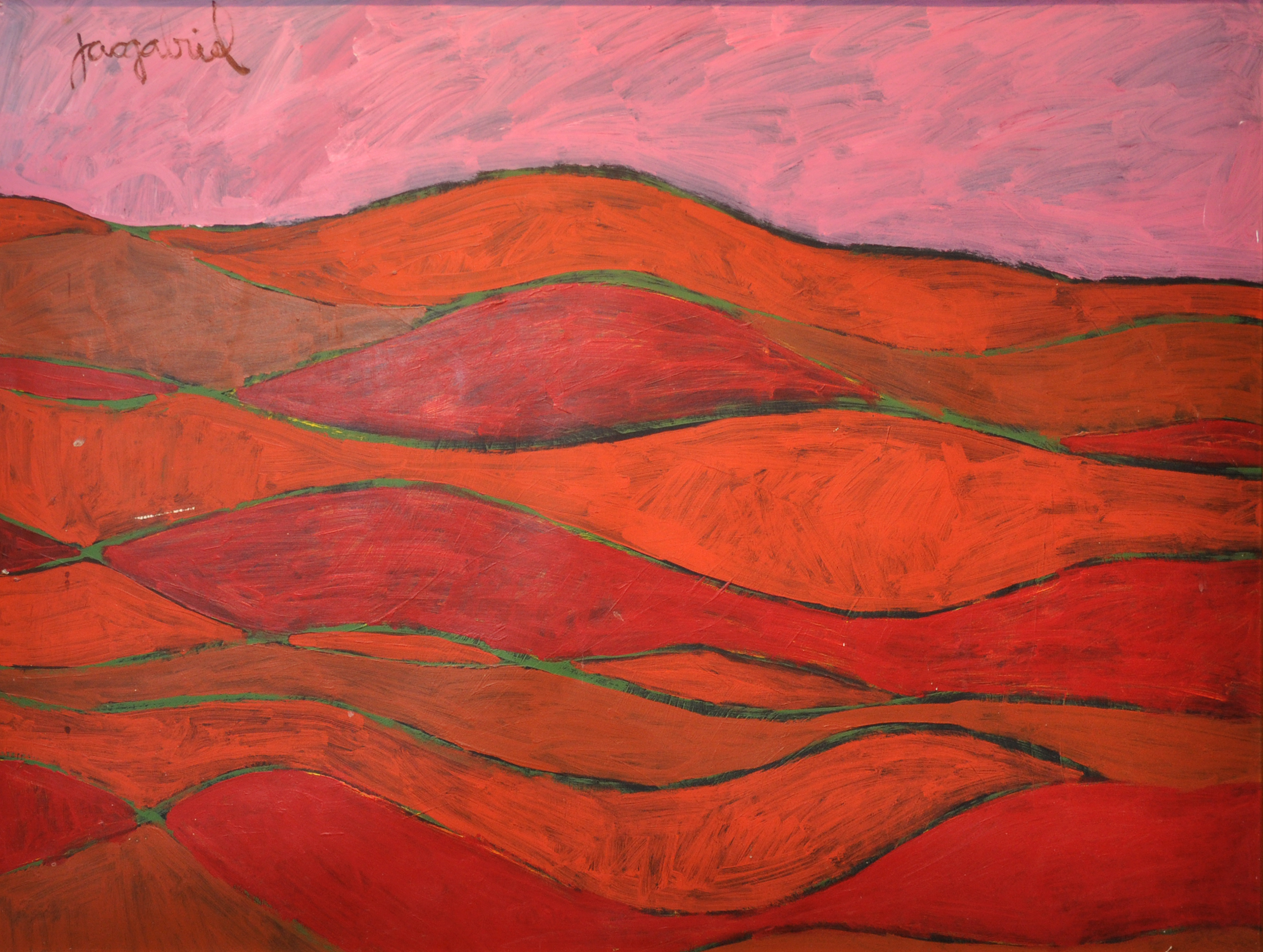
Jacques Gabriel, Oil on Canvas, approx. 1957-1965
Jacques Gabriel (1934-1988) was born in Port-au-Prince Haiti and went to school in the Unites States. Returning to Haiti, he studied in Haiti under Roland Dorcely for year before moving to Paris. In Paris, he discovers surrealism, and begins to work in both a figurative and abstract manner. His work is known for interesting use of perspective and strong contrasts. A retrospective of his work was held at Le Musée d’art Haitien in 2002.

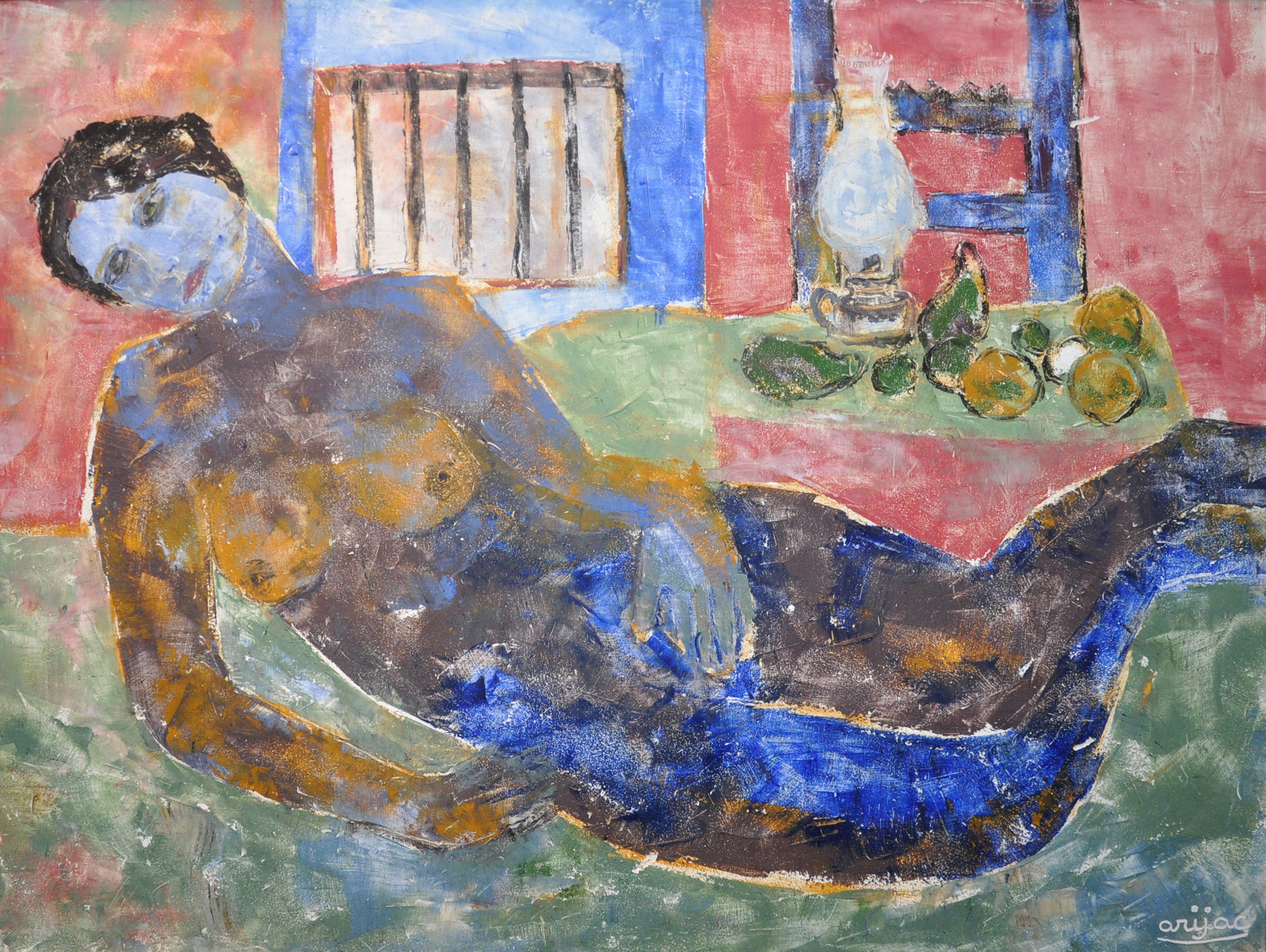
Arijac, Oil and Encaustic on Canvas, approx. 1965-1985
Harry Jacques, or known as Arijac, was born in 1937 in Gonaïves, Haiti. He studied architecture and worked in Sacha Thèbaud’s firm. He began painting in 1965 and studied with Thèbaud, who taught him to paint using the encaustic method. Encaustic painting is an ancient technique involving the combination of an iron with beeswax, turpentine, and pigment. He used this technique for approximately 20 years before switching exclusively to acrylic.

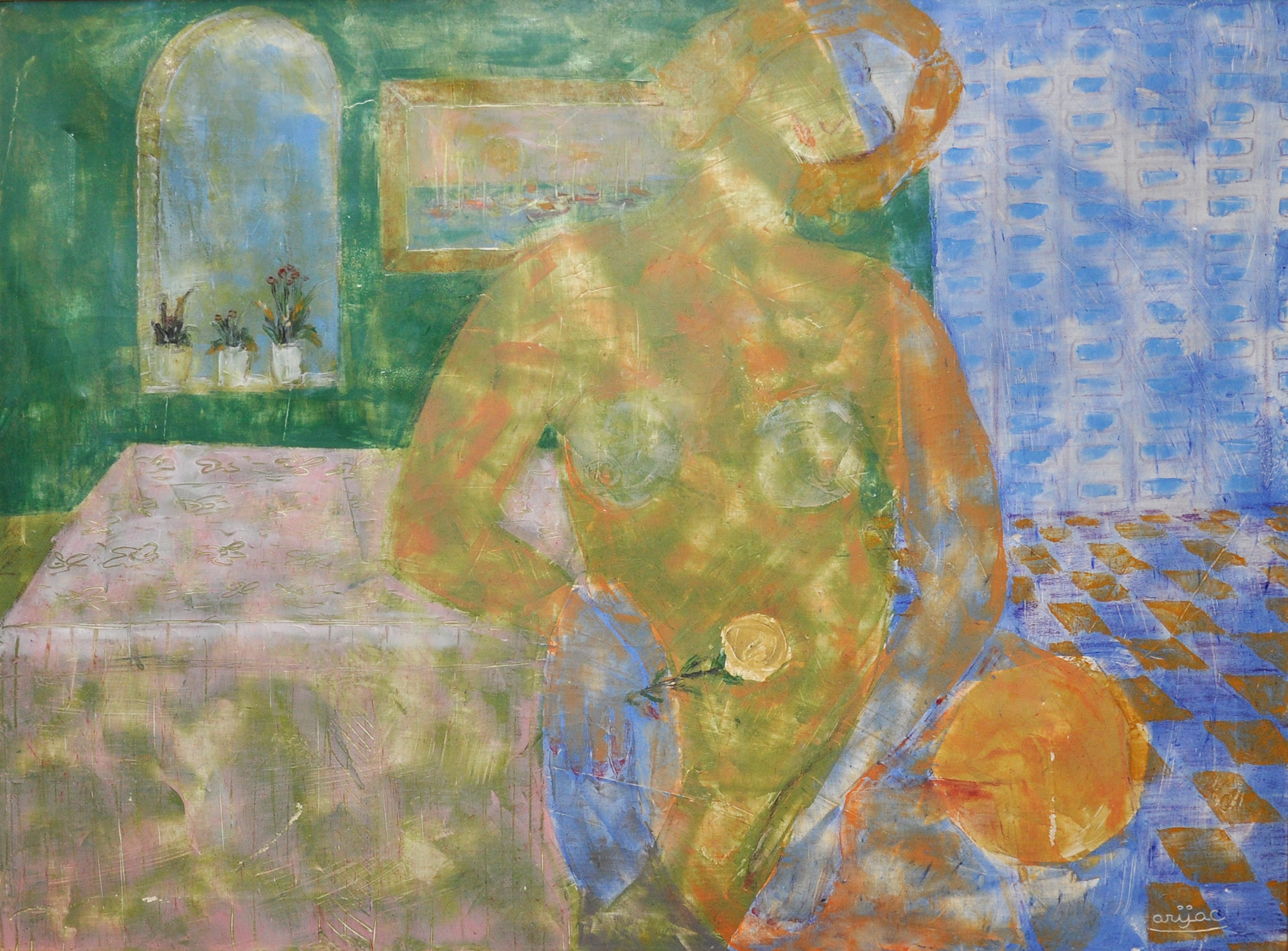
Arijac, Oil and Encaustic on Canvas, approx. 1965-1985
Harry Jacques, or known as Arijac, was born in 1937 in Gonaïves, Haiti. He studied architecture and worked in Sacha Thèbaud’s firm. He began painting in 1965 and studied with Thèbaud, who taught him to paint using the encaustic method. Encaustic painting is an ancient technique involving the combination of an iron with beeswax, turpentine, and pigment. He used this technique for approximately 20 years before switching exclusively to acrylic.

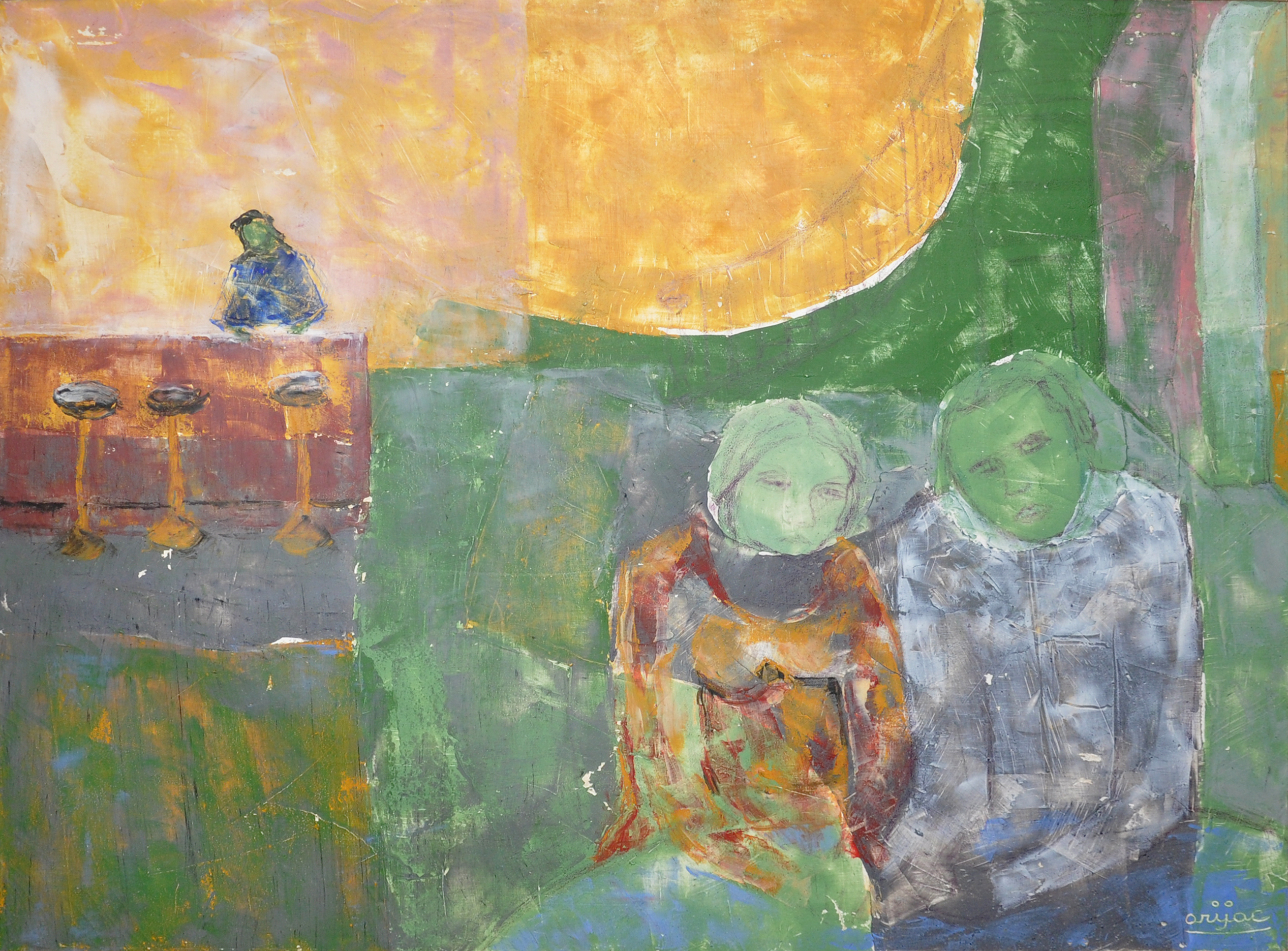
Arijac, Oil and Encaustic on Canvas, approx. 1965-1985
Harry Jacques, or known as Arijac, was born in 1937 in Gonaïves, Haiti. He studied architecture and worked in Sacha Thèbaud’s firm. He began painting in 1965 and studied with Thèbaud, who taught him to paint using the encaustic method. Encaustic painting is an ancient technique involving the combination of an iron with beeswax, turpentine, and pigment. He used this technique for approximately 20 years before switching exclusively to acrylic.

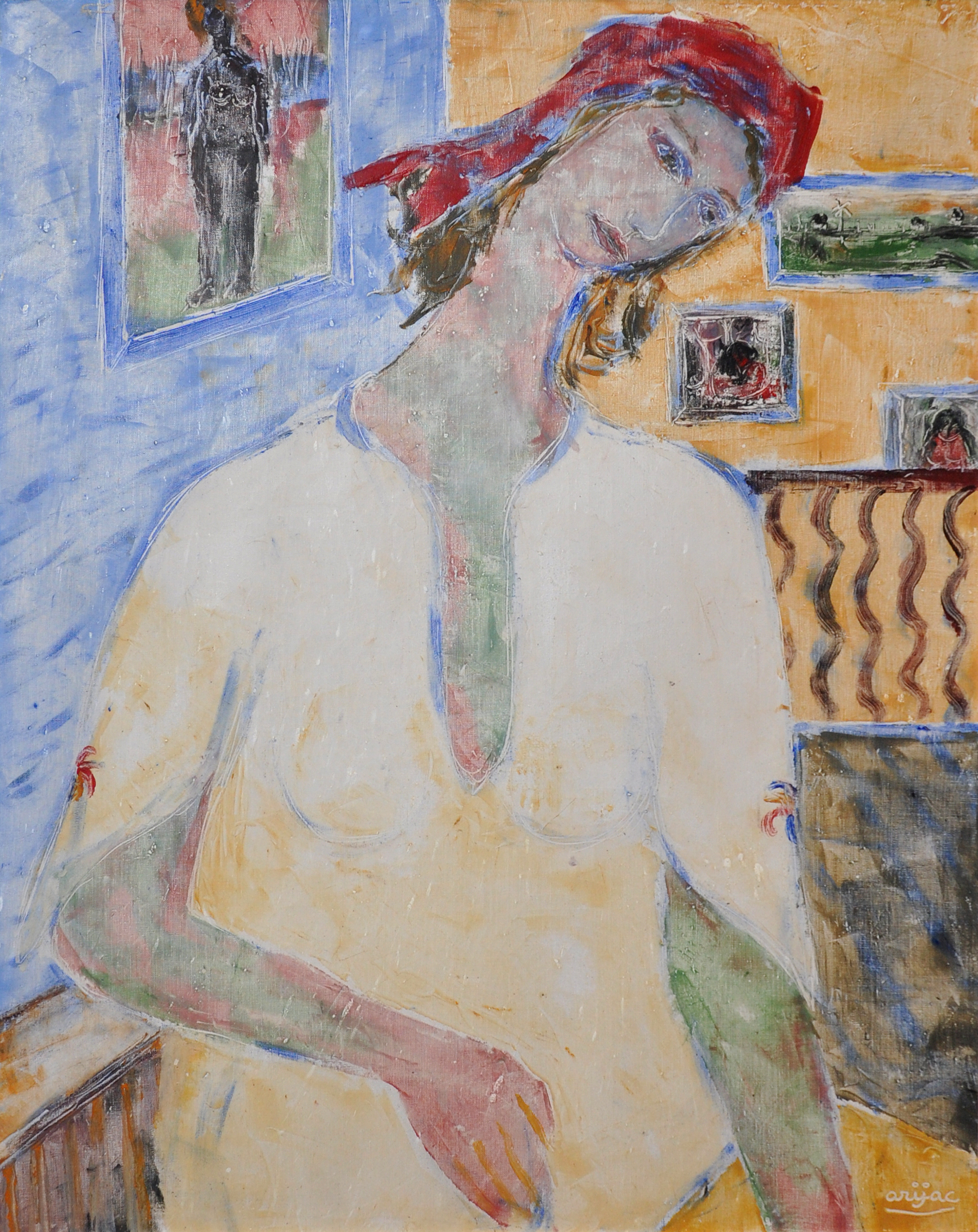
Arijac, Oil and Encaustic on Canvas, approx. 1965-1985
Harry Jacques, or known as Arijac, was born in 1937 in Gonaïves, Haiti. He studied architecture and worked in Sacha Thèbaud’s firm. He began painting in 1965 and studied with Thèbaud, who taught him to paint using the encaustic method. Encaustic painting is an ancient technique involving the combination of an iron with beeswax, turpentine, and pigment. He used this technique for approximately 20 years before switching exclusively to acrylic.

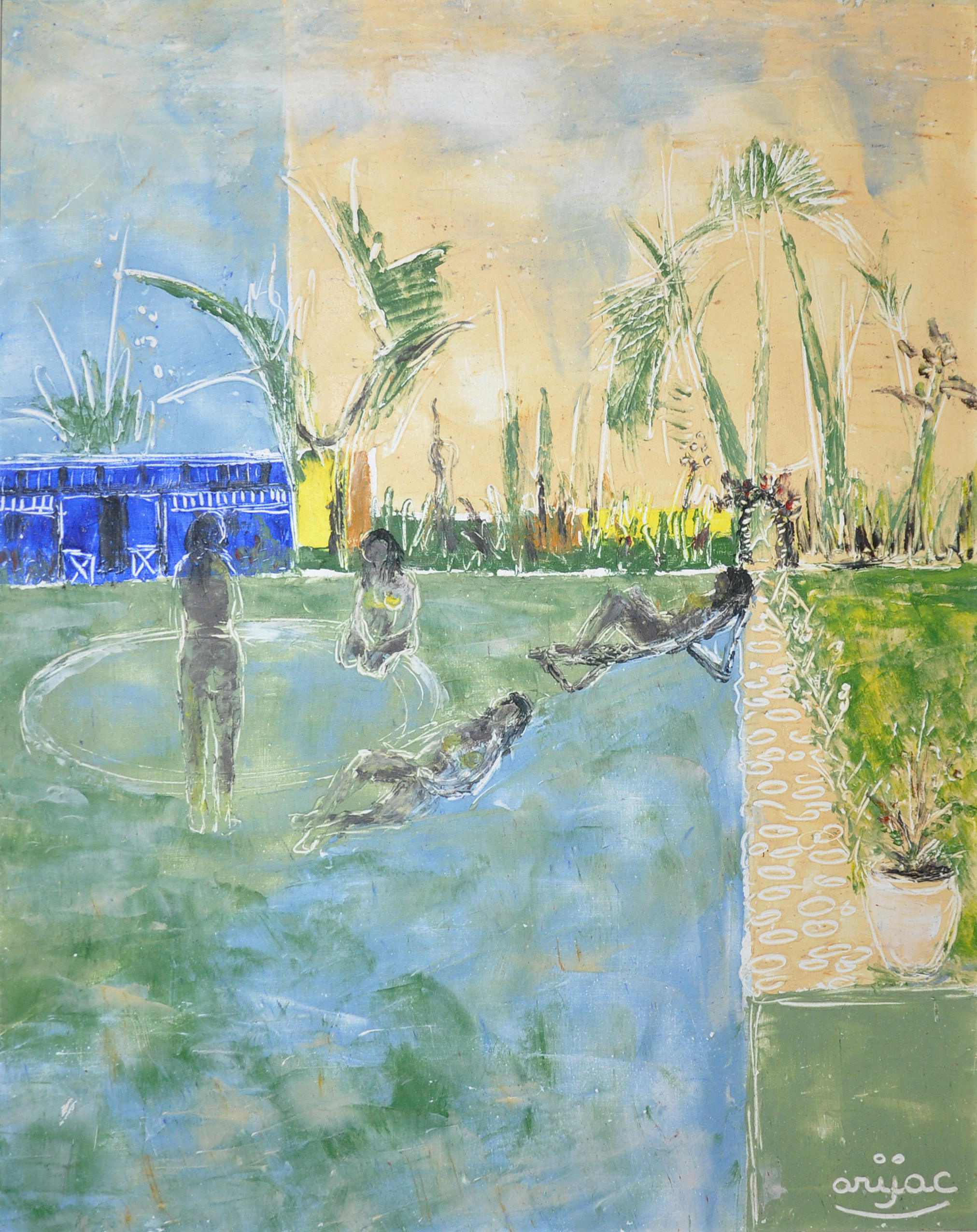
Arijac, Oil and Encaustic on Canvas, approx. 1965-1985
Harry Jacques, or known as Arijac, was born in 1937 in Gonaïves, Haiti. He studied architecture and worked in Sacha Thèbaud’s firm. He began painting in 1965 and studied with Thèbaud, who taught him to paint using the encaustic method. Encaustic painting is an ancient technique involving the combination of an iron with beeswax, turpentine, and pigment. He used this technique for approximately 20 years before switching exclusively to acrylic.

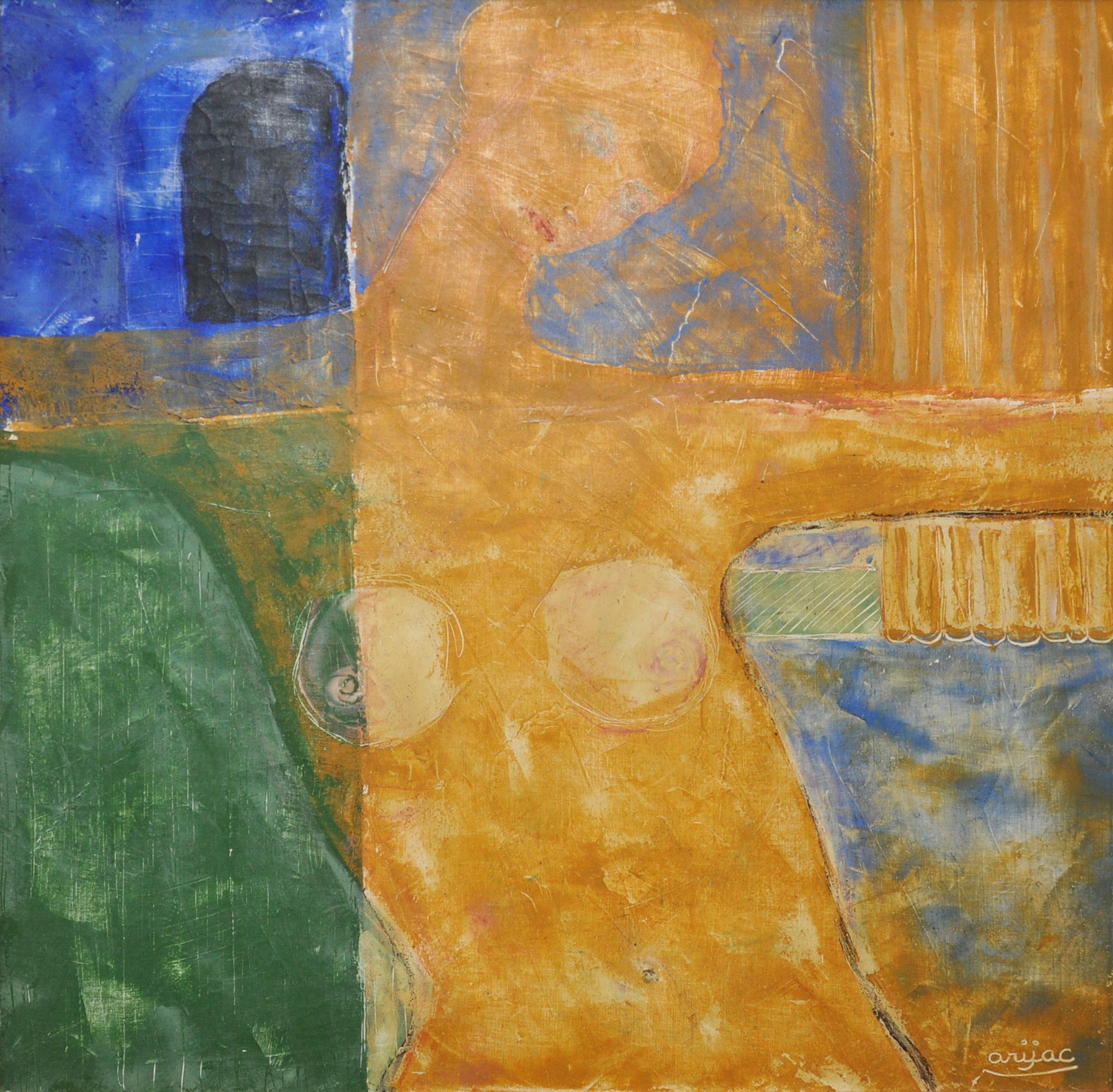
Arijac, Oil and Encaustic on Canvas, approx. 1965-1985
Harry Jacques, or known as Arijac, was born in 1937 in Gonaïves, Haiti. He studied architecture and worked in Sacha Thèbaud’s firm. He began painting in 1965 and studied with Thèbaud, who taught him to paint using the encaustic method. Encaustic painting is an ancient technique involving the combination of an iron with beeswax, turpentine, and pigment. He used this technique for approximately 20 years before switching exclusively to acrylic.

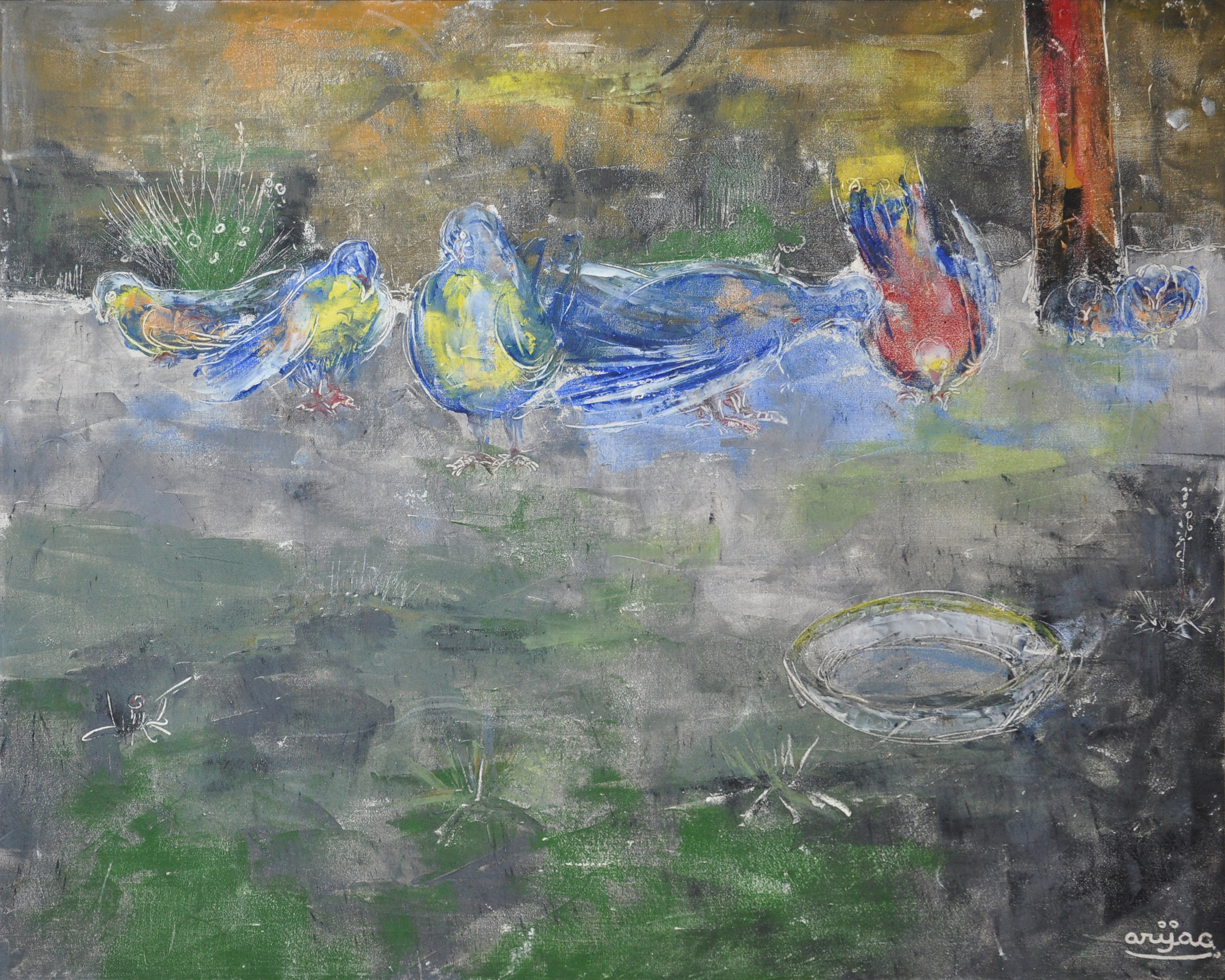
Arijac, Oil and Encaustic on Canvas, approx. 1965-1985
Harry Jacques, or known as Arijac, was born in 1937 in Gonaïves, Haiti. He studied architecture and worked in Sacha Thèbaud’s firm. He began painting in 1965 and studied with Thèbaud, who taught him to paint using the encaustic method. Encaustic painting is an ancient technique involving the combination of an iron with beeswax, turpentine, and pigment. He used this technique for approximately 20 years before switching exclusively to acrylic.

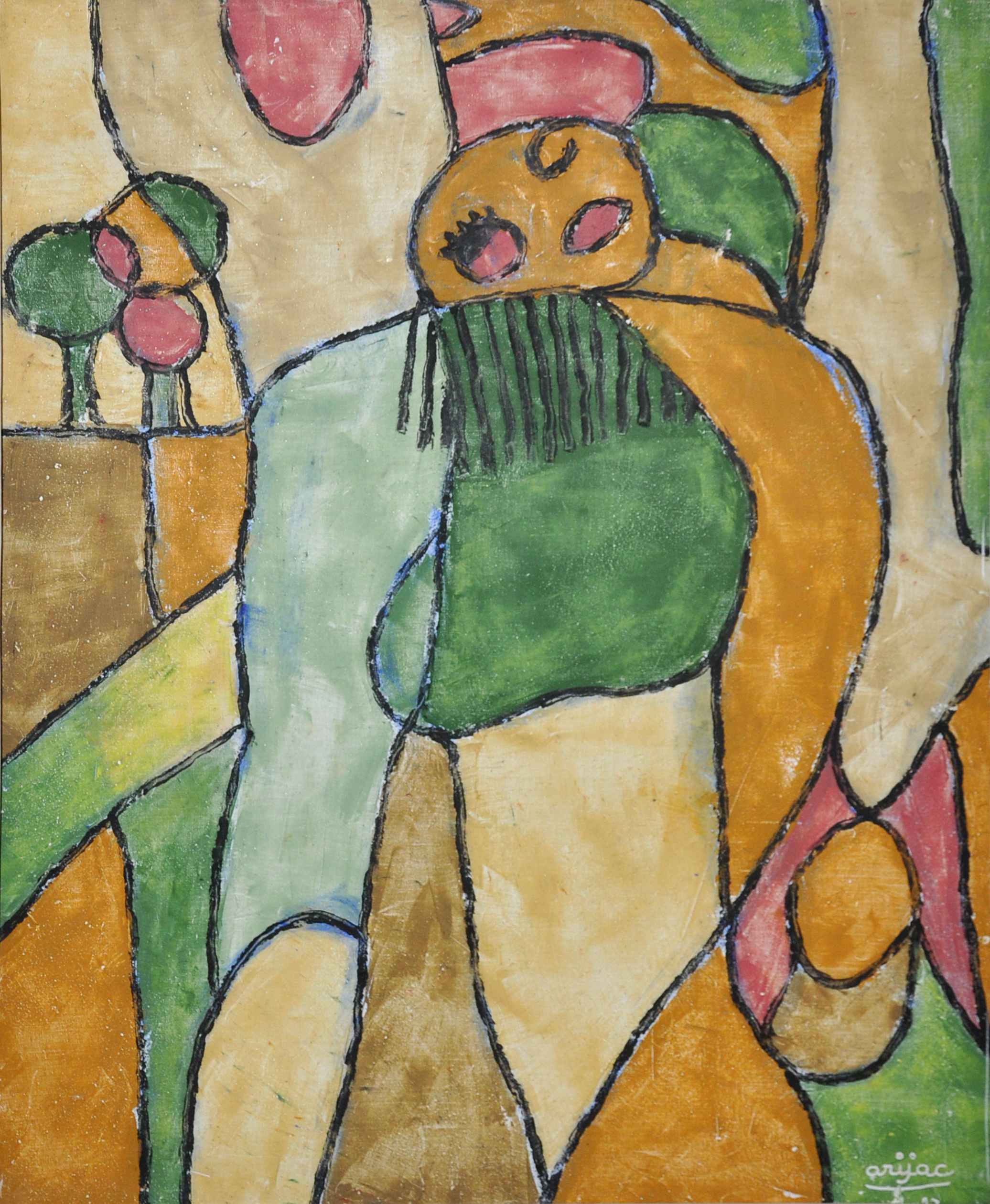
Arijac, Oil and Encaustic on Canvas, approx. 1965-1985
Harry Jacques, or known as Arijac, was born in 1937 in Gonaïves, Haiti. He studied architecture and worked in Sacha Thèbaud’s firm. He began painting in 1965 and studied with Thèbaud, who taught him to paint using the encaustic method. Encaustic painting is an ancient technique involving the combination of an iron with beeswax, turpentine, and pigment. He used this technique for approximately 20 years before switching exclusively to acrylic.

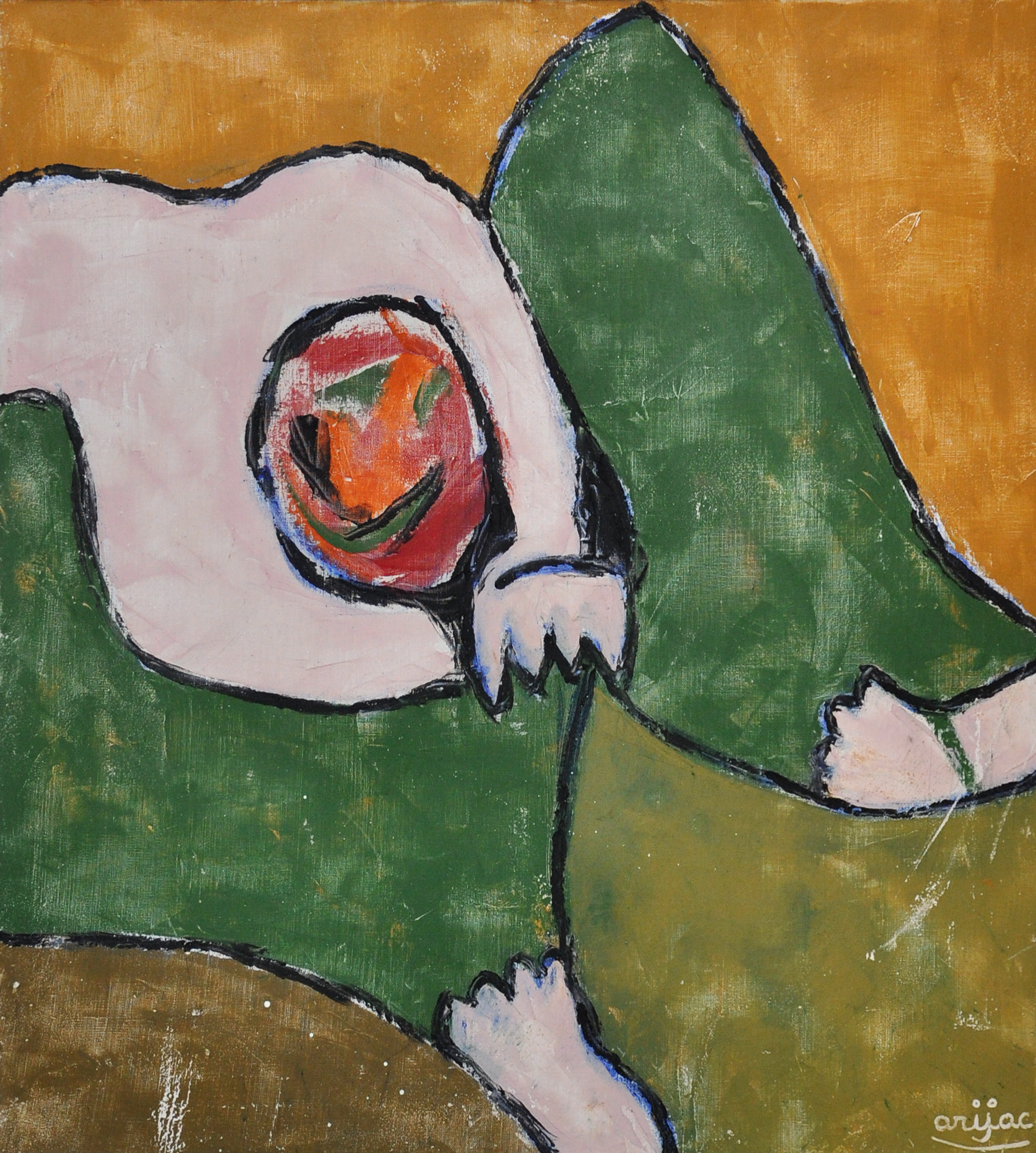
Arijac, Oil and Encaustic on Canvas, approx. 1965-1985
Harry Jacques, or known as Arijac, was born in 1937 in Gonaïves, Haiti. He studied architecture and worked in Sacha Thèbaud’s firm. He began painting in 1965 and studied with Thèbaud, who taught him to paint using the encaustic method. Encaustic painting is an ancient technique involving the combination of an iron with beeswax, turpentine, and pigment. He used this technique for approximately 20 years before switching exclusively to acrylic.

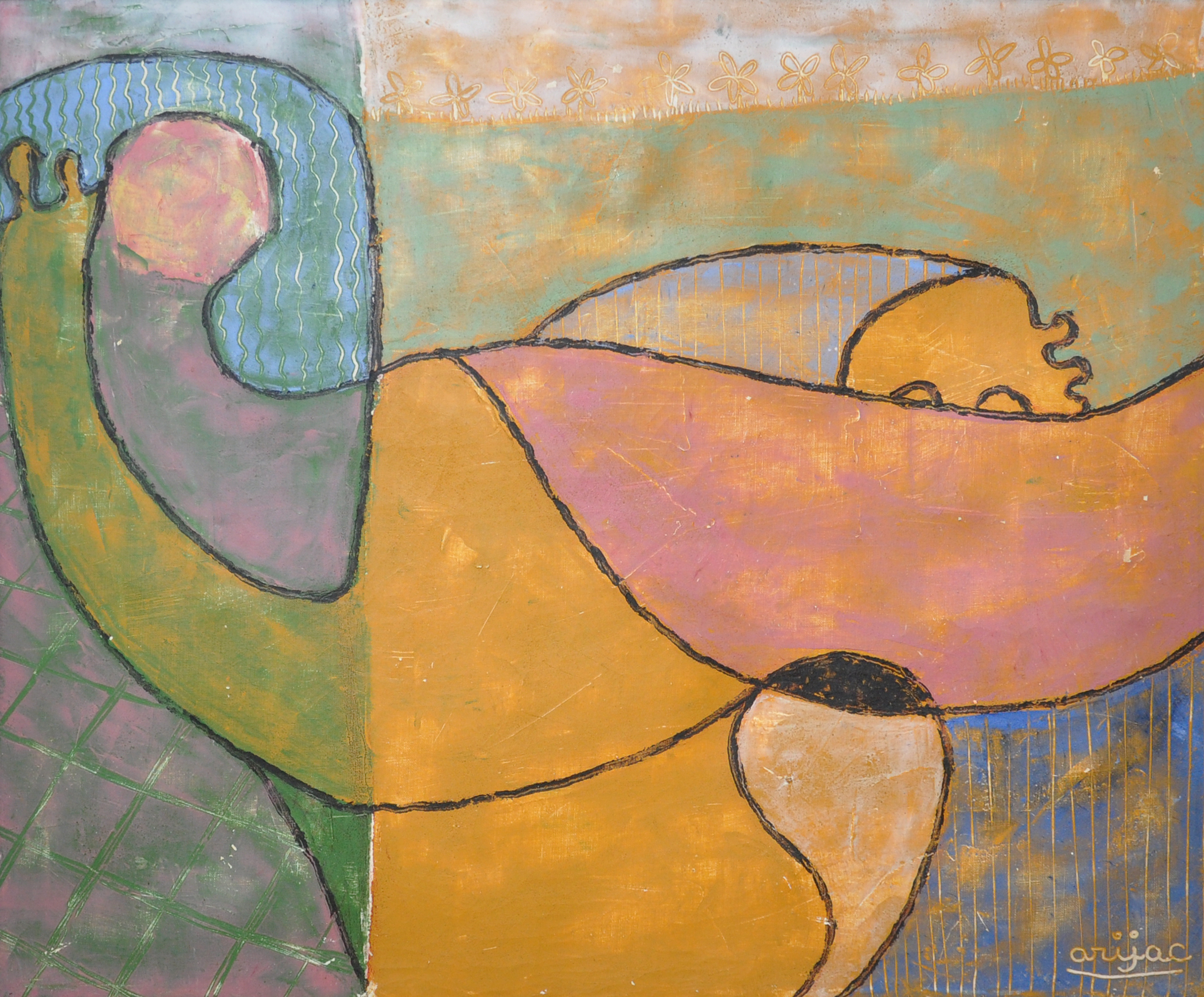
Arijac, Oil and Encaustic on Canvas, approx. 1965-1985
Harry Jacques, or known as Arijac, was born in 1937 in Gonaïves, Haiti. He studied architecture and worked in Sacha Thèbaud’s firm. He began painting in 1965 and studied with Thèbaud, who taught him to paint using the encaustic method. Encaustic painting is an ancient technique involving the combination of an iron with beeswax, turpentine, and pigment. He used this technique for approximately 20 years before switching exclusively to acrylic.

